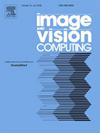DFF-Net: Deep Feature Fusion Network for low-light image enhancement
IF 4.2
3区 计算机科学
Q2 COMPUTER SCIENCE, ARTIFICIAL INTELLIGENCE
引用次数: 0
Abstract
Low-light image enhancement methods are designed to improve brightness, recover texture details, restore color fidelity and suppress noise in images captured in low-light environments. Although many low-light image enhancement methods have been proposed, existing methods still face two limitations: (1) the inability to achieve all these objectives at the same time; and (2) heavy reliance on supervised methods that limits practical applicability in real-world scenarios. To overcome these challenges, we propose a Deep Feature Fusion Network (DFF-Net) for low-light image enhancement which builds upon Zero-DCE’s light-enhancement curve. The network is trained without requiring any paired datasets through a set of carefully designed non-reference loss functions. Furthermore, we develop a Fast Deep-level Residual Block (FDRB) to strengthen DFF-Net’s performance, which demonstrates superior performance in both feature extraction and computational efficiency. Comprehensive quantitative and qualitative experiments demonstrate that DFF-Net achieves superior performance in both subjective visual quality and downstream computer vision tasks. In low-light image enhancement experiments, DFF-Net achieves either optimal or sub-optimal metrics across all six public datasets compared to other unsupervised methods. And in low-light object detection experiments, DFF-Net achieves maximum scores in four key metrics on the ExDark dataset: P at 83.3%, F1 at 72.8%, mAP50 at 74.9%, and mAP50-95 at 48.9%. Code is available at https://github.com/WangL0ngTa0/DFF-Net.
DFF-Net:用于弱光图像增强的深度特征融合网络
弱光图像增强方法旨在提高在弱光环境下拍摄的图像的亮度、恢复纹理细节、恢复色彩保真度和抑制噪声。虽然提出了许多低光图像增强方法,但现有方法仍然面临两个局限性:(1)无法同时实现所有这些目标;(2)严重依赖监督方法,限制了在现实场景中的实际适用性。为了克服这些挑战,我们提出了一种基于Zero-DCE光增强曲线的低光图像增强深度特征融合网络(DFF-Net)。通过一组精心设计的非参考损失函数,无需任何配对数据集即可训练网络。此外,我们开发了一种快速深层残差块(FDRB)来增强DFF-Net的性能,在特征提取和计算效率方面都表现出优异的性能。综合定量和定性实验表明,DFF-Net在主观视觉质量和下游计算机视觉任务上都取得了优异的性能。在弱光图像增强实验中,与其他无监督方法相比,DFF-Net在所有六个公共数据集上实现了最优或次优指标。在低光目标检测实验中,DFF-Net在ExDark数据集上的四个关键指标上取得了最高分:P为83.3%,F1为72.8%,mAP50为74.9%,mAP50-95为48.9%。代码可从https://github.com/WangL0ngTa0/DFF-Net获得。
本文章由计算机程序翻译,如有差异,请以英文原文为准。
求助全文
约1分钟内获得全文
求助全文
来源期刊

Image and Vision Computing
工程技术-工程:电子与电气
CiteScore
8.50
自引率
8.50%
发文量
143
审稿时长
7.8 months
期刊介绍:
Image and Vision Computing has as a primary aim the provision of an effective medium of interchange for the results of high quality theoretical and applied research fundamental to all aspects of image interpretation and computer vision. The journal publishes work that proposes new image interpretation and computer vision methodology or addresses the application of such methods to real world scenes. It seeks to strengthen a deeper understanding in the discipline by encouraging the quantitative comparison and performance evaluation of the proposed methodology. The coverage includes: image interpretation, scene modelling, object recognition and tracking, shape analysis, monitoring and surveillance, active vision and robotic systems, SLAM, biologically-inspired computer vision, motion analysis, stereo vision, document image understanding, character and handwritten text recognition, face and gesture recognition, biometrics, vision-based human-computer interaction, human activity and behavior understanding, data fusion from multiple sensor inputs, image databases.
 求助内容:
求助内容: 应助结果提醒方式:
应助结果提醒方式:


